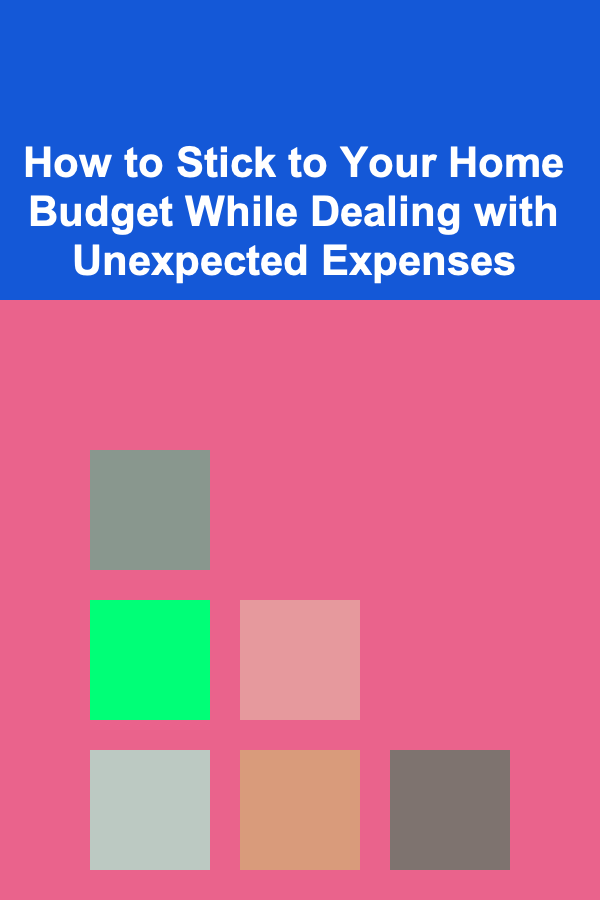
10 Tips for Cartoonists: Mastering Facial Expressions
ebook include PDF & Audio bundle (Micro Guide)
$12.99$10.99
Limited Time Offer! Order within the next:

Facial expressions are one of the most powerful tools a cartoonist can use to convey emotion, personality, and action. Whether you're illustrating a scene of laughter, anger, surprise, or sadness, the subtle nuances of a character's face can make a world of difference in storytelling. Cartoonists are tasked with distilling the vast complexity of human emotion into simple lines and shapes, and mastering facial expressions is crucial to achieving that goal.
In this article, we'll explore ten essential tips for cartoonists looking to improve their ability to draw expressive, compelling faces. These tips will help you breathe life into your characters, making them more relatable and memorable for your audience.
Understand the Basics of Human Expression
Before you dive into cartooning, it's important to grasp the basics of human facial anatomy and expression. While cartoons often exaggerate or simplify these features, the foundation is rooted in how our faces naturally move to communicate emotions.
Key Areas to Study:
- Eyes: The eyes are often considered the windows to the soul. Their positioning, size, and the way the eyelids move can express a wide range of emotions.
- Eyebrows: The eyebrows are crucial for conveying mood. Raised eyebrows can indicate surprise, while furrowed brows often signal anger or confusion.
- Mouth: The mouth is one of the most expressive parts of the face. A slight curve can suggest happiness, while a downturned mouth can indicate sadness or disappointment.
By understanding how these features work individually and in relation to one another, you can begin to manipulate them effectively in your cartoons.
Exaggerate for Impact
One of the hallmarks of cartooning is the ability to exaggerate features for comedic or dramatic effect. When it comes to facial expressions, this principle is especially useful.
How to Exaggerate:
- Stretch the emotions: If your character is happy, show it with an oversized grin. If they're angry, make their eyebrows lean in heavily and their eyes narrow dramatically. The more exaggerated the expression, the more clearly the emotion will come through.
- Exaggerate features: You don't need to keep the proportions realistic. Elongate the eyes or enlarge the mouth to amplify the emotion you're conveying.
- Play with scale: Make certain facial features disproportionately larger or smaller to enhance the expression. For instance, drawing a massive mouth for a character screaming adds intensity and draws attention to the emotion.
Exaggeration in cartooning helps characters "pop" and makes emotions instantly recognizable, even from a distance.
Use Simple Shapes to Convey Expression
Cartoonists often rely on basic shapes to communicate emotions quickly and clearly. The simplicity of these shapes is what makes them so effective for visual storytelling.
Shape Breakdown:
- Circles: Circular shapes are associated with happiness, excitement, and innocence. A character with large round eyes and a circular mouth suggests friendliness and joy.
- Triangles: Triangular shapes can evoke anger, tension, or even fear. Narrow eyes and sharp, angular eyebrows can indicate aggression or frustration.
- Squares: Square or boxy shapes can suggest stability or rigidity. A square jaw or a squared-off mouth can make a character appear stern or serious.
By reducing complex facial expressions to their simplest geometric forms, cartoonists can make emotions more recognizable and impactful.
Focus on Eye Expression
Eyes can communicate more than any other part of the face. In fact, many cartoonists rely on the eyes to tell the most important part of the story.
Tips for Drawing Eyes:
- Make them expressive: Large, wide eyes suggest surprise or joy, while narrowed eyes imply suspicion or anger.
- Use placement: The position of the eyes can shift the mood of a character. For example, downturned eyes can indicate sadness or defeat, while upward-turned eyes often represent optimism or dreaming.
- Play with eyelids: Raised eyelids suggest alertness, while drooping lids convey tiredness or disinterest.
The eyes are a vital tool for cartoonists, as they allow for quick expression of a character's inner thoughts and emotions.
Use Eyebrows for Emotional Context
Eyebrows play a significant role in amplifying a character's emotions. They can shape the mood of the character in an instant, and their position can drastically change how the face is interpreted.
Eyebrow Tips:
- Raised eyebrows: Suggest surprise, disbelief, or curiosity. They can also indicate innocence or confusion.
- Furrowed brows: Indicate anger, frustration, or concentration. This adds a sense of intensity to the character.
- Relaxed eyebrows: Often convey calmness, contentment, or neutrality. They give a softer expression to the face.
Eyebrows are the fine-tuning of a cartoon character's emotional state, and mastering their manipulation can create more nuanced, expressive drawings.
Consider the Context of the Expression
Facial expressions are not isolated; they are often influenced by the context of the scene. A character's face might change depending on their surroundings, the situation they are in, or the actions of other characters.
Contextual Tips:
- Match the mood of the scene: If a character is in a tense situation, their facial expression should reflect the stress or anxiety of the moment. Similarly, during moments of humor or light-heartedness, the face should convey a sense of fun.
- Interaction with other characters: Facial expressions can change in response to other characters' actions. A character's surprise might be amplified by another character's shocking statement or gesture.
- Match the storyline: The character's emotions should evolve in line with the story. A happy character might transition to sadness or anger as the narrative progresses, which should be reflected in their facial expression.
Context is everything in storytelling, and the facial expression must align with the tone of the scene to maintain consistency in the narrative.
Pay Attention to Small Details
While bold and exaggerated facial expressions are key to cartooning, small details can significantly enhance the depth and realism of a character's expression.
Small Details to Focus On:
- Tightened jaws: This can indicate tension or frustration. Drawing subtle jaw lines or clenched teeth can add a layer of realism to your character's expression.
- Sweat drops: Adding a small sweat drop to a character's forehead or face can signal nervousness, fear, or embarrassment.
- Tears or sparkles in the eyes: These can signal emotion like sadness or joy. Tears for sadness, or sparkles for happiness and excitement, add a dynamic element to the expression.
The beauty of cartooning lies in its ability to exaggerate emotions, but the inclusion of these small details helps ground the character in a more relatable emotional reality.
Practice Expressing Different Emotions
It's important to practice drawing different facial expressions that correspond to a wide range of emotions. Each emotion has distinct features and requires attention to specific facial parts.
Common Emotions to Practice:
- Happiness: Bright eyes, wide smiles, raised eyebrows.
- Sadness: Droopy eyes, frown, slumped posture.
- Surprise: Wide eyes, raised eyebrows, open mouth.
- Anger: Furrowed brows, narrowed eyes, clenched teeth.
- Fear: Wide eyes, open mouth, raised eyebrows.
- Disgust: Squinting eyes, wrinkled nose, turned mouth.
The more you practice drawing these emotions, the easier it will become to evoke them in your characters. Practice with a variety of expressions to build flexibility and creativity in your character designs.
Combine Facial Expressions with Body Language
Facial expressions are more impactful when paired with body language. The way a character holds their body can complement and enhance the emotion displayed on their face.
Tips for Integrating Body Language:
- Tension in the body: If a character is angry, they might clench their fists or have a stiff posture, complementing their furrowed brows and narrowed eyes.
- Relaxed posture: A relaxed character might slouch or lean back with a gentle smile, reinforcing their calm demeanor.
- Movement: A character jumping in excitement will likely have wide eyes and a big grin, but their body will also be elevated or poised as if in motion.
By pairing facial expressions with corresponding body language, you create a more dynamic and believable character.
Study Other Cartoonists and Artists
Finally, one of the best ways to improve your ability to draw expressive faces is to study other cartoonists and artists. Analyze how they convey emotions through faces and experiment with incorporating their techniques into your own work.
Where to Look:
- Classic cartoons: Animated characters like Mickey Mouse, Bugs Bunny, and Tom and Jerry have been designed with exaggerated and clear facial expressions that convey emotions quickly.
- Modern cartoons: Look at newer animated series and comic books for more complex and nuanced expressions. Pay attention to the subtle details and how the characters' faces reflect their personality and emotions.
- Illustrated art: Many artists, especially in manga and graphic novels, focus heavily on the facial expressions of their characters. Manga artists, for example, are masters at conveying a range of emotions through minimalist lines and exaggerated features.
By learning from others, you can find inspiration and techniques to enhance your own cartooning style.
Conclusion
Mastering facial expressions is an essential skill for cartoonists. It allows you to convey complex emotions, tell compelling stories, and create characters that resonate with your audience. Through exaggeration, understanding basic human anatomy, using simple shapes, and practicing a variety of emotions, you can make your characters come to life.
Whether you're creating a humorous character, a dramatic villain, or a lovable hero, mastering facial expressions will elevate your cartooning skills and enable you to tell stories that connect with people on a deeper emotional level.
Reading More From Our Other Websites
- [Home Soundproofing 101] How to Soundproof Your Space as a Renter: Smart Solutions for Noise Control
- [Personal Finance Management 101] How to Use Cash Envelopes to Control Your Spending
- [Star Gazing Tip 101] Capturing the Cosmos: Essential Gear and Settings for Stunning Night Sky Shots
- [Organization Tip 101] How to Organize Photos for a Charity or Fundraiser
- [Home Staging 101] How to Stage a Luxury Home to Appeal to High-End Buyers
- [Personal Finance Management 101] How to Set Up Financial Milestones for a Successful Future
- [Home Pet Care 101] How to Create a Safe and Enriching Indoor Environment for Rabbits
- [Home Pet Care 101] How to Make Your Home Safe for Small Pets like Hamsters and Rabbits
- [Personal Care Tips 101] How to Use Soap to Reduce Inflammation in the Body
- [Personal Care Tips 101] How to Choose the Best Acne Treatment Cream for Your Skin Type

How to Handle Job Rejections Gracefully and Keep Going
Read More
How to Make Your Home Party Fun and Memorable for Kids
Read More
How to Organize Your Family's Wardrobe for Easy Mornings
Read More
How to Stage Your Home for Luxury Appeal Without Overdoing It
Read More
How to Stick to Your Home Budget While Dealing with Unexpected Expenses
Read More
How to Use Online Course Development to Make Money
Read MoreOther Products

How to Handle Job Rejections Gracefully and Keep Going
Read More
How to Make Your Home Party Fun and Memorable for Kids
Read More
How to Organize Your Family's Wardrobe for Easy Mornings
Read More
How to Stage Your Home for Luxury Appeal Without Overdoing It
Read More
How to Stick to Your Home Budget While Dealing with Unexpected Expenses
Read More